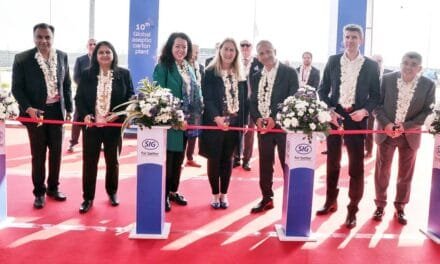Last May Production Linked Incentives scheme (PLI scheme) was approved for the food processing industry with an outlay of Rs. 10900 crores. However, with large-scale protests, the repeal of the farm laws, and a rocky year for the agricultural industry in India, it is up for debate whether the scheme will succeed, argue, Rupin Chopra and Apalka Bareja.
In a bid to boost production and manufacturing and consequently generate employment within the country, the government has conceptualized and initiated production linked incentives (PLI) for various industries in India. As the name suggests, the scheme provides incentives, largely to set up and expand on manufacturing units or to increase production.
The first round of incentives were focused on the consumer electronics sector. Incentives to the tune of 4-6% were offered on incremental sales. It saw the likes of international giants such as Samsung and Foxconn taking an interest, as well as domestic players such as Lava and Micromax attempting a comeback. Since April 2020, when the scheme was announced, the additional investments of Rs. 1300 crore were seen alongside 22,000 new jobs. In Q1 of FY22, mobile exports grew by a massive 2.5 times to Rs. 4600 crore, and imports dropped by over 80% from Rs. 3200 to just Rs. 600 crores.[1]
While this is certainly a boon, similar results have not been replicated across industries. For example, the AC and LED lights industries do not offer incentives for “mere assembly”, which are only present for incremental production. This has not appealed to local manufacturers, who do not have the capital to set up sophisticated manufacturing facilities.
Last May, a PLI scheme was approved for the food processing industry with an outlay of Rs. 10900 crores[2]. However, with large-scale protests, the repeal of the farm laws, and a rocky year for the agricultural industry in India, it is up for debate whether the scheme will succeed.
Features of the PLI Scheme
Components: The scheme has three main components. The first relates to the manufacturing of ready-to-cook products, processed fruits and vegetables, marine products, and mozzarella cheese. The second component is concerned with organic products as well as free-range poultry. The third component relates to support for branding and marketing abroad.
Tenure: The tenure of the scheme is of six years, FY2021-22 to FY2026-27. The incentives for each year will be payable in the following year.
Eligibility: Eligibility criteria for different categories of applicants have been provided in Appendix A, dealing with each of the three components. For the first category, there exist minimum sales and minimum investment (on plant and machinery, technical civil works and associated infrastructure) requirements. For the second category, there exist minimum sales and registration requirements. For the third category, the only eligibility is that the applicant shall be an Indian brand.
Investment Criteria for PLI Scheme
Investments under the scheme must be undertaken in two years, FY2021-22 and FY2022-23. However, investments made in FY2020-21 will also be counted towards the minimum and committed investment requirements.
Any expenditure incurred on land would not be counted towards minimum investments or committed investments. Similarly, no expenditure on guest house building, recreational facilities, office buildings, or residences will be counted towards the same. At the same time, no second-hand/refurbished equipment shall be considered for inclusion under committed investment.
Selection Process for PLI Scheme
Applicants would be marked on the basis of sales and investment criteria and provided with a score, with different criteria for the three different types of categories – as provided under Appendix E of the scheme. All applicants would be marked and then ranked, and the number of applicants to be given incentives would be limited by the budget availability and allocation for the segment.
No applicant would receive less than 5% or more than 25% of the segment’s total outlay.
Incentives
The incentive for any particular applicant would be calculated as –
Incentive = Incremental Sales in Approved Product Segment × Corresponding Rate of Incentive as in Appendix-C
However, the applicants must maintain a prescribed CAGR to claim the said incentives, which may be relaxed in case of a force majeure event.
For the branding and marketing segment, applicants will be extended financial incentives @50% of such expenditure abroad subject to a maximum grant of 3% of Sales of food products or Rs. 50 crore per year, whichever is less. Here, there exists a minimum expenditure requirement at Rs. 5 crores.
Expectations
The scheme aimed to create 2.5 lakh jobs and increase sales worth Rs. 1.2 lakh crore, an additional investment of Rs. 6,000 crore and an increase in investment worth Rs. 27,816 crores by the end of its operation. These expectations are now up in the air.
Concerns Today
Initially, leading FMCG companies in India had hailed the scheme, touting it as a game-changer in the industry[3]. Their excitement seems to have died down since the repeal of farm laws announced.
The entire idea of the farm laws was to link farmers directly with the food processing units, cutting middlemen, hoping to reduce agri-waste and grow local manufacturing. Particularly, the Farmer (Empowerment and Protection) Agreement of Price Assurance and Farm Services Bill, 2020, would have allowed farmers to enter into contracts with agribusinesses, processors, wholesalers, exporters, or retailers – enabling contract farming. Without this benefit, it could be difficult for businesses to avail the benefit of the incentives due to concerns of non-fulfillment of CAGR requirements.[4]
Similarly, the Essential Commodities (Amendment) Bill, 2020 was intended to remove the stockholding limits placed on cereals, pulses, oilseeds, etc., which the country can produce a massive surplus of. However, due to stockholding limits, high MSPs, and other interventions, the cereal industry grew at a meagre rate of 1.1% since 2011-12.[5] The removal of these limits along with the incentives were the basis for applicants of the third category, who could struggle to maintain their minimum expenditure requirements as their sourcing plans may be hit.[6]
References
- Kumar A, “Are PLI Schemes for Mobiles and It Hardware a Success? Here’s The Report Card” (cnbctv18.com September 24, 2021) https://www.cnbctv18.com/technology/are-pli-schemes-for-mobiles-and-it-hardware-a-success-heres-the-report-card-10878382.htm accessed November 30, 2021.
- PIB Delhi, “Cabinet Approves Production Linked Incentive Scheme for Food Processing Industry” (Ministry of Food Processing Industries March 31, 2021) accessed November 29, 2021.
- PTI, “Pli for Food Processing a Game-Changer, to Boost Agri-Exports: FMCG Players” (Business Standard March 31, 2021) https://www.business-standard.com/article/economy-policy/pli-for-food-processing-a-game-changer-to-boost-agri-exports-fmcg-players-121033101270_1.html accessed November 30, 2021.
- Bhushan R and Anand S, “Farm Law Rollback: Move May Hit Sourcing and Expansion Plans of Food Processing Companies” (The Economic Times) accessed November 30, 2021.
- Chand R, “New Farm Acts 2020” (NITI Aayog, November 2020) https://www.niti.gov.in/sites/default/files/2020-11/NewFarmActs2020.pdf accessed November 30, 2021.
- Pathak K and Tandon S, “Sourcing Plans of FMCG COS May Be Hit” (mint November 19, 2021) https://www.livemint.com/news/india/sourcing-plans-of-fmcg-cos-may-be-hit-11637344258773.html accessed November 30, 2021.
Authors are Associate Partner and Associate Advocate, respectively, at S.S. Rana & Co., New Delhi. They can be reached at info@ssrana.com. Authors want to thank Suyash Bajpai, an intern, for his assistance in research of this article.
















